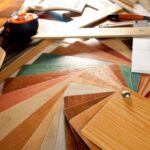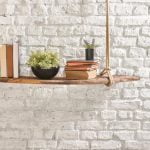Are you curious about how to decorate your home in medieval style? The allure of this historical aesthetic is undeniable, with its rich colors, ornate detailing, and timeless appeal.
In this article, we will explore the key characteristics of medieval style and what makes it so captivating for home decor. From the use of heavy, dark woods to the incorporation of tapestries and wrought iron accents, we will delve into the elements that define medieval decor and provide tips for bringing this timeless style into your modern home.
Medieval style encompasses a range of design elements that evoke a sense of grandeur and opulence. From the use of rich, jewel-toned fabrics to the intricate craftsmanship found in furniture and decor, there is a certain allure to decorating in a medieval style. Many individuals are drawn to the historical and romantic feel that this aesthetic brings to a space, making it a popular choice for those seeking to infuse their homes with a sense of old-world charm.
Throughout this article, we will explore the color palette commonly associated with medieval decor, as well as the textiles and materials used to create an authentic look. Additionally, we will provide insights into incorporating statement pieces and architectural details inspired by medieval design. Whether you are looking to completely transform your home or simply add hints of medieval flair, we will guide you through the process of creating a cohesive and captivating look that seamlessly blends history with modernity.
Key Elements of Medieval Home Decor
When it comes to decorating your home in a medieval style, there are several key elements that define this unique aesthetic. By incorporating these elements into your decor, you can create a space that feels rich, elegant, and steeped in history.
Heavy, Dark Woods and Rich Fabrics
One of the defining features of medieval home decor is the use of heavy, dark woods such as oak, mahogany, and walnut. These woods are often used in furniture pieces such as canopy beds, dining tables, and chairs to add a sense of grandeur to the space.
Additionally, rich, jewel-toned fabrics like velvet and brocade are essential for creating an opulent atmosphere within a medieval-inspired home. These fabrics can be used for upholstery, drapes, and decorative pillows to add texture and color to the space.
Wrought Iron Accents and Tapestries
Incorporating wrought iron accents such as chandeliers, sconces, and wall art can add an element of drama to a medieval-themed interior. The use of tapestries is also a crucial aspect of medieval decor as they not only add color and texture to the walls but also tell stories through their intricate designs. Tapestries depicting scenes from history or mythology were commonly used in medieval castles and manors as a form of decoration and insulation.
Ornate Detailing in Furniture and Decor
The craftsmanship found in medieval-style furniture is characterized by intricate carvings and ornate detailing. Look for furniture with decorative motifs such as acanthus leaves or Gothic arches to capture the essence of medieval design.
Similarly, decorative objects such as candelabras, goblets, and heraldic emblems can enhance the authenticity of your decor by adding a touch of old-world charm. Incorporating these key elements will help you achieve an authentic medieval look within your home while still allowing for personal expression and creativity in the process.
By carefully considering each key element – from woods to fabrics to metalwork – you can successfully evoke the grandeur and opulence associated with the medieval era while creating an inviting and luxurious living space.
Color Palette and Textiles
When it comes to decorating your home in a medieval style, the color palette and textiles play a crucial role in creating an authentic and inviting atmosphere. The colors commonly used in medieval decor include deep, rich tones such as crimson red, royal blue, emerald green, and gold. These colors were often associated with wealth and royalty during the medieval period, making them the perfect choice for creating a luxurious ambiance in your home.
In addition to the rich color palette, textiles also play a significant role in bringing the medieval style to life. Fabrics such as velvet, brocade, and tapestries were commonly used in medieval homes to add warmth and texture to the space.
Incorporating these textiles into your modern home decor can be as simple as adding throw pillows or draping a brocade tablecloth over a dining table. These fabrics can also be used for upholstery or curtains to create a truly authentic medieval look.
When incorporating these textiles into your home, it’s important to consider how they will work with your existing decor. Mixing textures and patterns can add depth and visual interest to your space while staying true to the medieval aesthetic. Ultimately, the goal is to create a sense of opulence and grandeur that is characteristic of medieval design.
By carefully selecting your color palette and incorporating luxurious textiles into your home decor, you can bring the richness and warmth of medieval style into your modern living space. Whether you choose to go all-in with velvet upholstery or simply add a few tapestries as wall decor, embracing this timeless aesthetic can truly transform your home into a regal retreat.
Furniture and Accessories
When it comes to decorating your home in a medieval style, the furniture and accessories you choose play a significant role in capturing the essence of this historical period. Here are some key elements to consider when selecting furniture and accessories for a medieval-inspired home:
– **Elaborate, Carved Furniture**: One of the defining features of medieval style is the use of intricate detailing and craftsmanship in furniture. Look for pieces with ornate carvings, decorative embellishments, and rich finishes to create an authentic medieval look in your home.
– **Statement Pieces**: Incorporating statement pieces can instantly elevate the medieval aesthetic of your space. Consider adding a canopy bed with draped curtains, throne-like chairs, or a grand dining table to make a bold statement and bring an air of regal elegance to your decor.
– **Finding or Creating Medieval-Inspired Furniture and Accessories**: While authentic medieval furniture may be difficult to come by, there are many ways to find or create pieces that capture the spirit of this historical period. Look for antique shops, online marketplaces, or specialized retailers that offer reproductions or inspired designs. You can also consider customizing existing furniture with intricate carvings or decorative elements to achieve a unique medieval look.
Incorporating elaborate, carved furniture and statement pieces into your home decor can help create a captivating medieval ambiance. Whether you opt for authentic antiques, high-quality reproductions, or custom-made designs, these furniture and accessories will serve as focal points that define the overall aesthetic of your medieval-inspired home.
Lighting and Candle Decor
Discussing the use of candlelight and wrought iron chandeliers in medieval decor can create a warm and inviting ambiance in your home. Here are some tips for incorporating candle decor into a modern home safely and effectively:
- Illuminate your space with pillar candles set in ornate candelabras or medieval-style candle holders to add an old-world charm to your decor.
- Consider installing wrought iron chandeliers with flickering candles or LED flameless candles for a dramatic lighting effect that complements the medieval aesthetic.
- Use sconces with candleholders on the wall to create a romantic and rustic atmosphere reminiscent of medieval times.
Lighting plays a crucial role in setting the mood in a medieval-inspired home, so it’s essential to choose lighting fixtures and candle decor that complement the overall style while still providing sufficient illumination for daily activities.
Incorporating soft, warm lighting through candles and wrought iron chandeliers can instantly transport you to another era, creating a cozy and enchanting atmosphere within your living space. With careful selection and placement, these lighting elements can enhance the medieval style of your home while adding warmth and character to each room.
Wall Decor and Tapestries
When it comes to decorating a home in medieval style, wall décor and tapestries play a crucial role in setting the ambiance and adding visual interest to a space. In medieval design, tapestries were not only used for decoration but also served as insulation, adding warmth to drafty castles and manor houses. When choosing tapestries for your home, consider opting for reproductions of famous medieval pieces or modern textiles with similar motifs and colors.
One way to incorporate tapestries into a modern home is by using them as statement pieces on large walls or as bed canopies for a touch of drama and grandeur. Additionally, smaller tapestries can be used as throws or tablecloths to add texture and interest to furniture while still adhering to the medieval aesthetic.
Finding authentic medieval tapestries may be difficult and expensive, but there are many high-quality replicas available for purchase that capture the essence of these historic textiles.
In addition to tapestries, other forms of wall decor such as metalwork, wood carvings, and heraldic banners can add depth and authenticity to the overall look of a medieval-inspired space. Experiment with different textures, motifs, and materials when choosing wall decor to create a truly immersive experience within your home.
| Benefits of Medieval Wall Decor | How to Incorporate Wall Decor |
|---|---|
| Creates an authentic medieval ambiance | Use large-scale reproduction tapestries as statement pieces |
| Adds visual interest and texture to walls | Opt for smaller tapestries as throws or tablecloths |
| Highlights historical storytelling through art | Experiment with various textured wall decor like metalwork and wood carvings |
Incorporating Medieval Architecture and Details
Medieval architecture is characterized by its use of heavy stone, wood beam ceilings, and arches. These elements can provide a sense of grandeur and timelessness to a home, making it a popular choice for those looking to incorporate historical inspiration into their living space. The use of these architectural details can create a dramatic impact on the overall aesthetic of a home.
One way to bring medieval architecture into a modern space is through the use of arches. Arches add an element of sophistication and elegance to any interior and have been used in architectural design for centuries. Whether incorporated into doorways, windows, or even as part of the structure itself, arches can add depth and character to a home.
Stone and wood beam ceilings are also common features found in medieval-inspired architecture. While not everyone has access to original stone walls or wooden beams, there are ways to mimic this look through faux finishing techniques or utilizing materials that mimic the appearance of stone and wood. Implementing these elements can give your space a sense of history and rustic charm.
Another way to incorporate medieval details into modern living spaces is through the use of wrought iron fixtures such as chandeliers, sconces, and other ornate metalwork. This can add an authentic touch and create ambiance while paying homage to historical craftsmanship. Incorporating elements like these can help tie together all aspects of your medieval-inspired decor.
| Medieval Architecture Elements | Details |
|---|---|
| Arches | Adds sophistication and elegance |
| Stone and Wood Beam Ceilings | Provide historical charm through faux finishing techniques or alternative materials |
| Wrought Iron Fixtures | Create authenticity and ambiance while honoring historical craftsmanship |
Bringing It All Together
In conclusion, decorating your home in medieval style can be a rich and rewarding experience that brings a sense of history and grandeur to your living space. By incorporating key elements such as heavy, dark woods, rich fabrics, ornate detailing, and wrought iron accents, you can create a truly unique and inviting atmosphere in your home.
The use of a color palette consisting of deep reds, golds, and dark greens, along with luxurious textiles like velvet and tapestries, adds to the opulence of this style.
When it comes to furniture and accessories, opting for elaborate, carved pieces and statement items like canopy beds or throne-like chairs can truly elevate the medieval aesthetic of your home. Additionally, incorporating soft candlelight and wrought iron chandeliers can help to create an intimate and warm ambiance that is characteristic of medieval decor.
To tie everything together cohesively, it’s important to strike a balance between authenticity and modernity when decorating in a historical style. This can be achieved through thoughtful curation of furniture and decor, as well as by adding architectural elements like stone accents or wood beam ceilings.
Ultimately, embracing personal expression and creativity will allow you to infuse your home with the timeless allure of medieval style while still making it feel uniquely yours. Whether you’re drawn to the romance of the medieval era or simply appreciate the beauty of its design elements, bringing this historical style into your home can result in a truly enchanting living space.
Frequently Asked Questions
How to Make Your Home Look Medieval?
To make your home look medieval, focus on incorporating architectural elements like exposed beams, stone or brick walls, and arched doorways or windows. Use heavy, dark wooden furniture and add tapestries, wrought iron light fixtures, and decorative metal accents. Incorporate decorative items like armor, swords, and shields to create an authentic medieval feel.
How Do You Make a House Look Like a Castle?
To make a house look like a castle, consider adding turrets or battlements to the roofline for a dramatic effect. Look for large, ornate doors with heavy iron hardware and incorporate stone or brick exterior finishes. Inside, use rich fabrics like velvet and leather for upholstery and drapery and choose traditional-style furniture with intricate carving details.
What Colors Were Medieval Houses?
The colors used in medieval houses were often earthy tones such as browns, greens, deep reds, and blues. These colors were often derived from natural sources like plants or minerals used to create dyes for textiles or paints for walls. Additionally, dark wood finishes were prevalent in furniture and architectural elements within medieval homes.

I’m thrilled to be your companion on this exciting journey through the world of home decor and design. With a passion for turning houses into homes and a keen eye for the finer details, I’m here to help you transform your living spaces into beautiful, functional, and meaningful havens.





